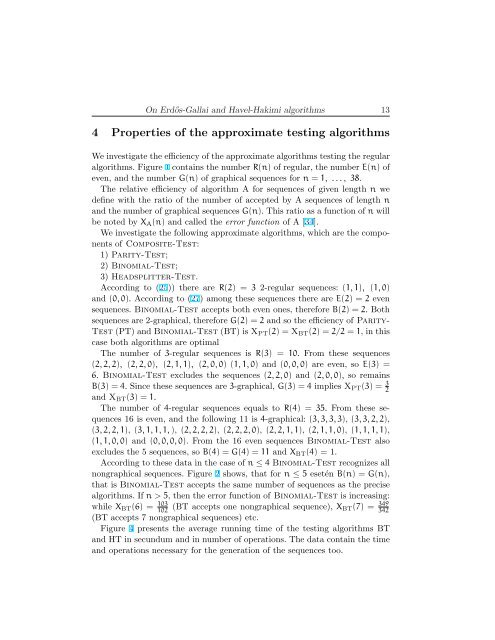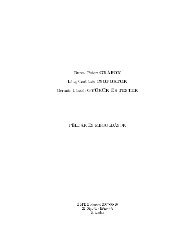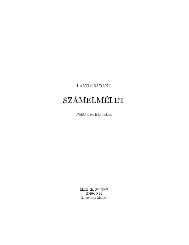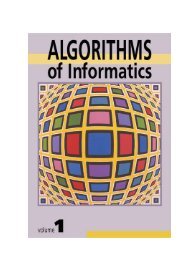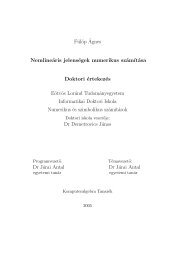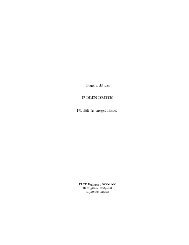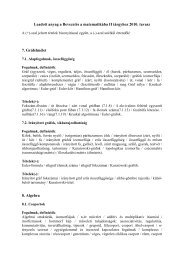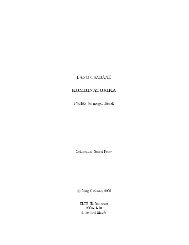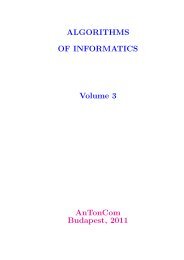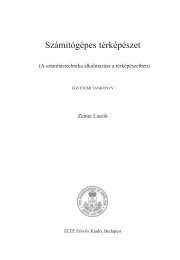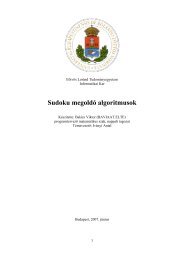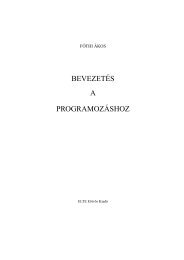On Erd˝os-Gallai and Havel-Hakimi algorithms
On Erd˝os-Gallai and Havel-Hakimi algorithms
On Erd˝os-Gallai and Havel-Hakimi algorithms
You also want an ePaper? Increase the reach of your titles
YUMPU automatically turns print PDFs into web optimized ePapers that Google loves.
<strong>On</strong> Erdős-<strong>Gallai</strong> <strong>and</strong> <strong>Havel</strong>-<strong>Hakimi</strong> <strong>algorithms</strong> 13<br />
4 Properties of the approximate testing <strong>algorithms</strong><br />
We investigate the efficiency of the approximate <strong>algorithms</strong> testing the regular<br />
<strong>algorithms</strong>. Figure 1 contains the number R(n) of regular, the number E(n) of<br />
even, <strong>and</strong> the number G(n) of graphical sequences for n = 1, . . . , 38.<br />
The relative efficiency of algorithm A for sequences of given length n we<br />
define with the ratio of the number of accepted by A sequences of length n<br />
<strong>and</strong> the number of graphical sequences G(n). This ratio as a function of n will<br />
be noted by XA(n) <strong>and</strong> called the error function of A [34].<br />
We investigate the following approximate <strong>algorithms</strong>, which are the components<br />
of Composite-Test:<br />
1) Parity-Test;<br />
2) Binomial-Test;<br />
3) Headsplitter-Test.<br />
According to (25)) there are R(2) = 3 2-regular sequences: (1, 1), (1, 0)<br />
<strong>and</strong> (0, 0). According to (27) among these sequences there are E(2) = 2 even<br />
sequences. Binomial-Test accepts both even ones, therefore B(2) = 2. Both<br />
sequences are 2-graphical, therefore G(2) = 2 <strong>and</strong> so the efficiency of Parity-<br />
Test (PT) <strong>and</strong> Binomial-Test (BT) is XPT(2) = XBT(2) = 2/2 = 1, in this<br />
case both <strong>algorithms</strong> are optimal<br />
The number of 3-regular sequences is R(3) = 10. From these sequences<br />
(2, 2, 2), (2, 2, 0), (2, 1, 1), (2, 0, 0) (1, 1, 0) <strong>and</strong> (0, 0, 0) are even, so E(3) =<br />
6. Binomial-Test excludes the sequences (2, 2, 0) <strong>and</strong> (2, 0, 0), so remains<br />
B(3) = 4. Since these sequences are 3-graphical, G(3) = 4 implies XPT(3) = 3<br />
2<br />
<strong>and</strong> XBT(3) = 1.<br />
The number of 4-regular sequences equals to R(4) = 35. From these sequences<br />
16 is even, <strong>and</strong> the following 11 is 4-graphical: (3, 3, 3, 3), (3, 3, 2, 2),<br />
(3, 2, 2, 1), (3, 1, 1, 1, ), (2, 2, 2, 2), (2, 2, 2, 0), (2, 2, 1, 1), (2, 1, 1, 0), (1, 1, 1, 1),<br />
(1, 1, 0, 0) <strong>and</strong> (0, 0, 0, 0). From the 16 even sequences Binomial-Test also<br />
excludes the 5 sequences, so B(4) = G(4) = 11 <strong>and</strong> XBT(4) = 1.<br />
According to these data in the case of n ≤ 4 Binomial-Test recognizes all<br />
nongraphical sequences. Figure 2 shows, that for n ≤ 5 esetén B(n) = G(n),<br />
that is Binomial-Test accepts the same number of sequences as the precise<br />
<strong>algorithms</strong>. If n > 5, then the error function of Binomial-Test is increasing:<br />
while XBT(6) = 103<br />
102 (BT accepts one nongraphical sequence), XBT(7) = 349<br />
342<br />
(BT accepts 7 nongraphical sequences) etc.<br />
Figure 4 presents the average running time of the testing <strong>algorithms</strong> BT<br />
<strong>and</strong> HT in secundum <strong>and</strong> in number of operations. The data contain the time<br />
<strong>and</strong> operations necessary for the generation of the sequences too.


